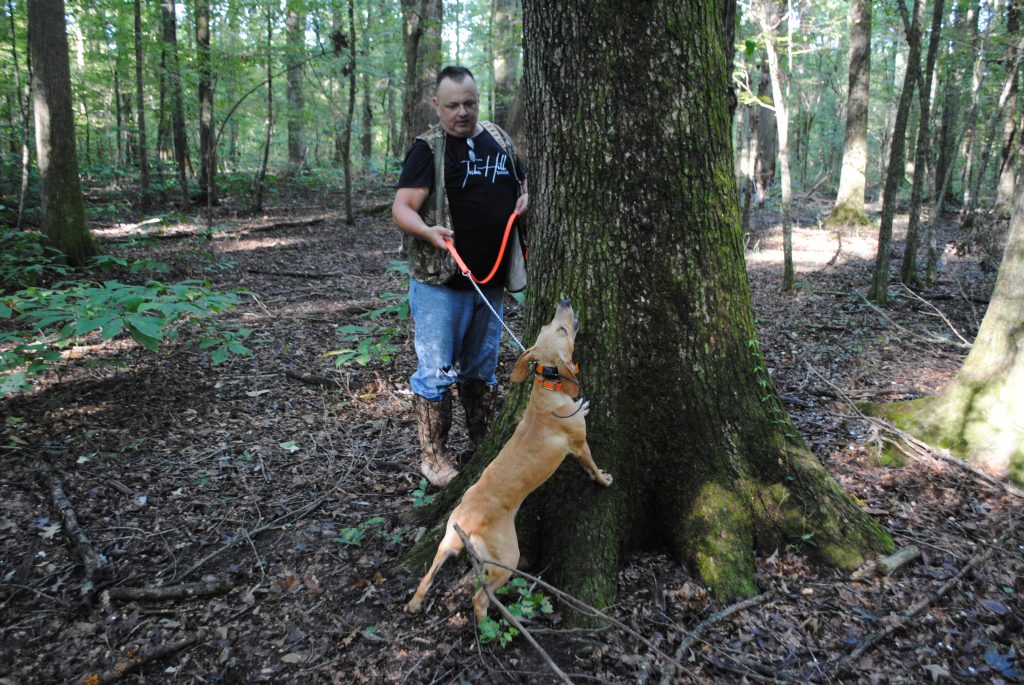For practical purposes in the woods, many squirrel hunters are far more concerned with a dog’s hunting ability than with its pedigree. While breed, blood lines and hunting skills at times may go hand in hand, neither a dog’s breed nor its ancestry guarantees success in the squirrel woods. That’s why north Alabama squirrel hunter and dog breeder Sonny Conwill has never been afraid to experiment when attempting to build a better squirrel dog.
Conwill, who lives in Lawrence County just west of Moulton, has long savored the satisfaction of a successful squirrel hunt. He measures success not only in terms of harvesting squirrels but also in pursuing and in eating them as well. And pursuing them, for Conwill, almost always requires a squirrel dog or two leading the way.
On most occasions, the dogs are raised, trained and ultimately hunted either by Conwill or by one of his friends or relatives in northwest Alabama or northeast Mississippi.
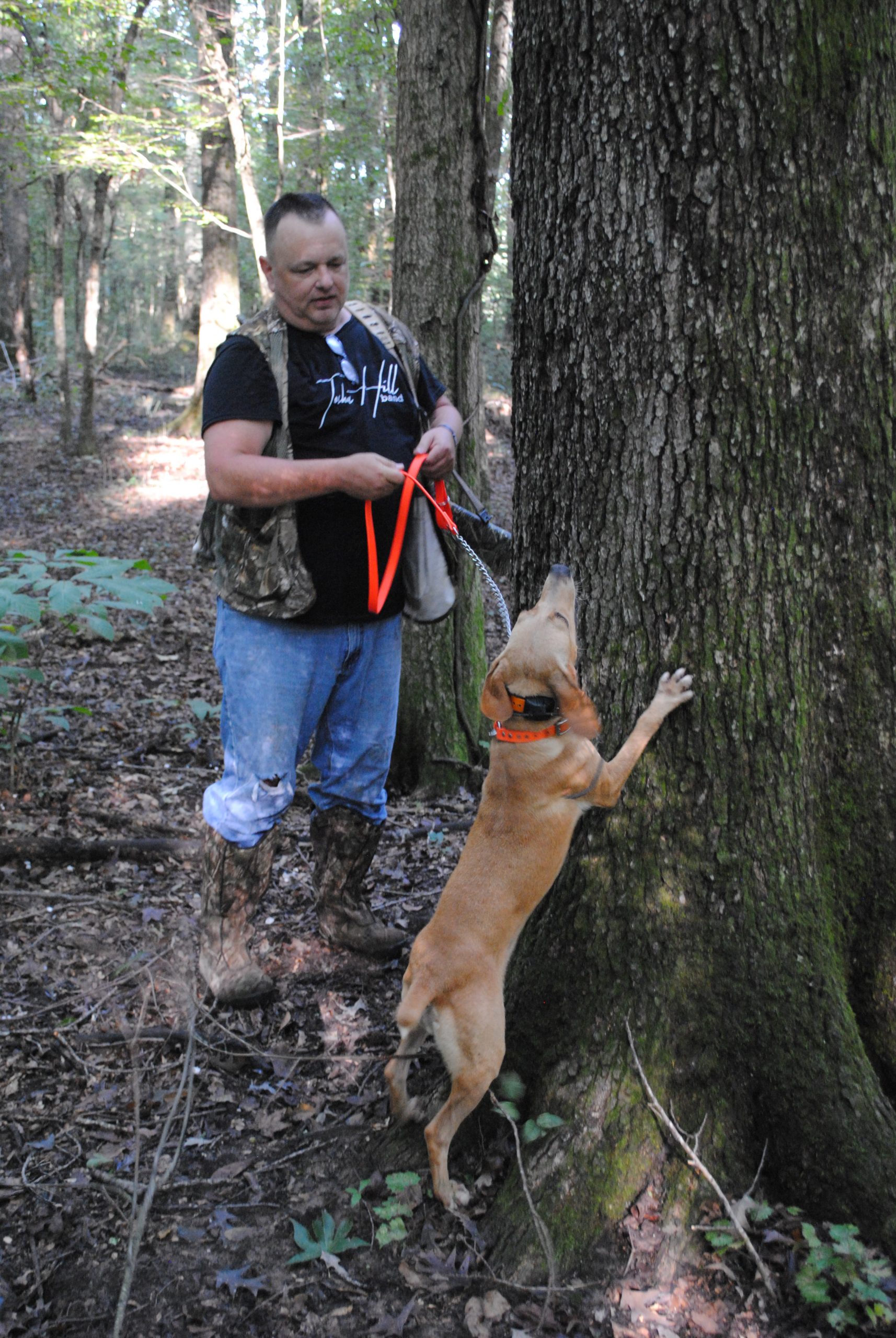
The results are usually impressive even if Conwill’s approach to developing a successful hunter is often unorthodox. He laughs about the ribbing that he takes from friends, but Conwill said he has developed the eye and an instinct to know what types of dogs and what types of mixes will develop into a good hunter.
“Oh, Lord, I’ve been made fun of more than anyone,” Conwill said after a taking a young squirrel dog, Blondie, for a brief workout in the woods early this fall. “We’ve experimented so much mixing different breeds and types of dogs. I’m not afraid to try something a little different in hopes of breeding a better squirrel hunting dog.”
Natural skills
Conwill repeatedly comes back to one idea as he discusses squirrel dogs. He wants one that has “natural” hunting abilities. While he acknowledges that squirrel dogs with good abilities can be trained to hunt better, he said neither he nor the average squirrel hunter has time to spend training a dog that doesn’t hunt instinctively well.
“A lot of people are really good trainers, a lot better than me,” he said. “I don’t have the patience to be a good trainer. Finding that natural hunting dog is what I look for. A dog that doesn’t have a natural ability, it’s just hard for me to train them to tree, to beg them to bark and to beg them to hunt. The biggest thing for me is a dog that does these things naturally.”
So what natural traits does Conwill expect in a good squirrel dog? He’s almost always looking for one with good intelligence, a good nose, the ability to wind and to tree squirrels, and the willingness to stay treed once squirrels are located. He also wants an obedient dog and one that hunts close. While just about all of those characteristics can be improved by training, Conwill said some dogs are just more naturally prone to exhibit instinctive hunting qualities.
“The dogs that I’ve had the best success with were naturally intelligent and natural hunters,” Conwill said.
“I’m looking for one that’s going to go in there, find squirrels and stay treed. You want one that’s accurate. Squirrels will go up one tree and leave an area on another tree, so there will always be some misses. But a good dog will have a squirrel most of the time, particularly if the weather is not just terrible. So you want one that’s going to be accurate, meaning there will be a squirrel there at least 70 percent of the time. That’s pretty accurate with these gray squirrels.”
Conwill also said he looks for a dog that has “just enough nose,” a hunting and breeding expression that suggests a dog’s innate ability to smell. A dog with “too much nose” will false tree a squirrel that might have passed through an area hours before.
“You want one to have enough nose to find squirrels when they are not moving well,” Conwill said, “but you don’t want one with so much nose that they are going to tree something that was there hours ago. You can get too much nose, particularly if a dog is not that smart.”
The natural nose factor comes into play when a dog detects squirrels through air currents, often called “winding”, rather than one found on the ground or around the base of a tree.

“I like a dog that winds,” Conwill said. “You’re going to have days where the game is just not moving. If your dog will only tree by track, you’re not going to have much luck. You can’t train (winding) or if you can, I don’t know how to train it. It’s a natural instinct for some dogs.”
Part of the make-up of a good squirrel dog is simply personality and disposition, Conwill said.
“You want a dog that has good sense and handles well,” he said. “It doesn’t leave the country. Some dogs will only hunt in a straight line. You could almost put a compass on the dog’s head and know it is going to be straight ahead and maybe far away.”
“Again, if game is not moving, a dog that doesn’t zig-zag and find the squirrels available in a small space, you might walk all day to find one squirrel. Having the ability to stay close and hunt an entire area rather than running straight through the woods is something that I look for in a good dog.”
Mixing breeds
When Conwill suggests that he’s “been made fun of” through the years, much of the playful mockery by friends comes from his mixing and matching of different dogs. While squirrel dogs come in a variety of shapes, sizes, and breeds, Conwill isn’t afraid to plant genes from different types of hunting and working dogs into his squirrel dog lines.
“Bird dogs (pointers and German shorthairs), spitz, full hounds, half hounds, I’ve probably tried more different things than anybody,” Conwill said. “I’ve probably had the best luck with a dog that has a little hound in it. I also like a little bird dog in my squirrel dogs. You watch your percentages and try to get the best qualities of each breed ingrained in a single dog.”
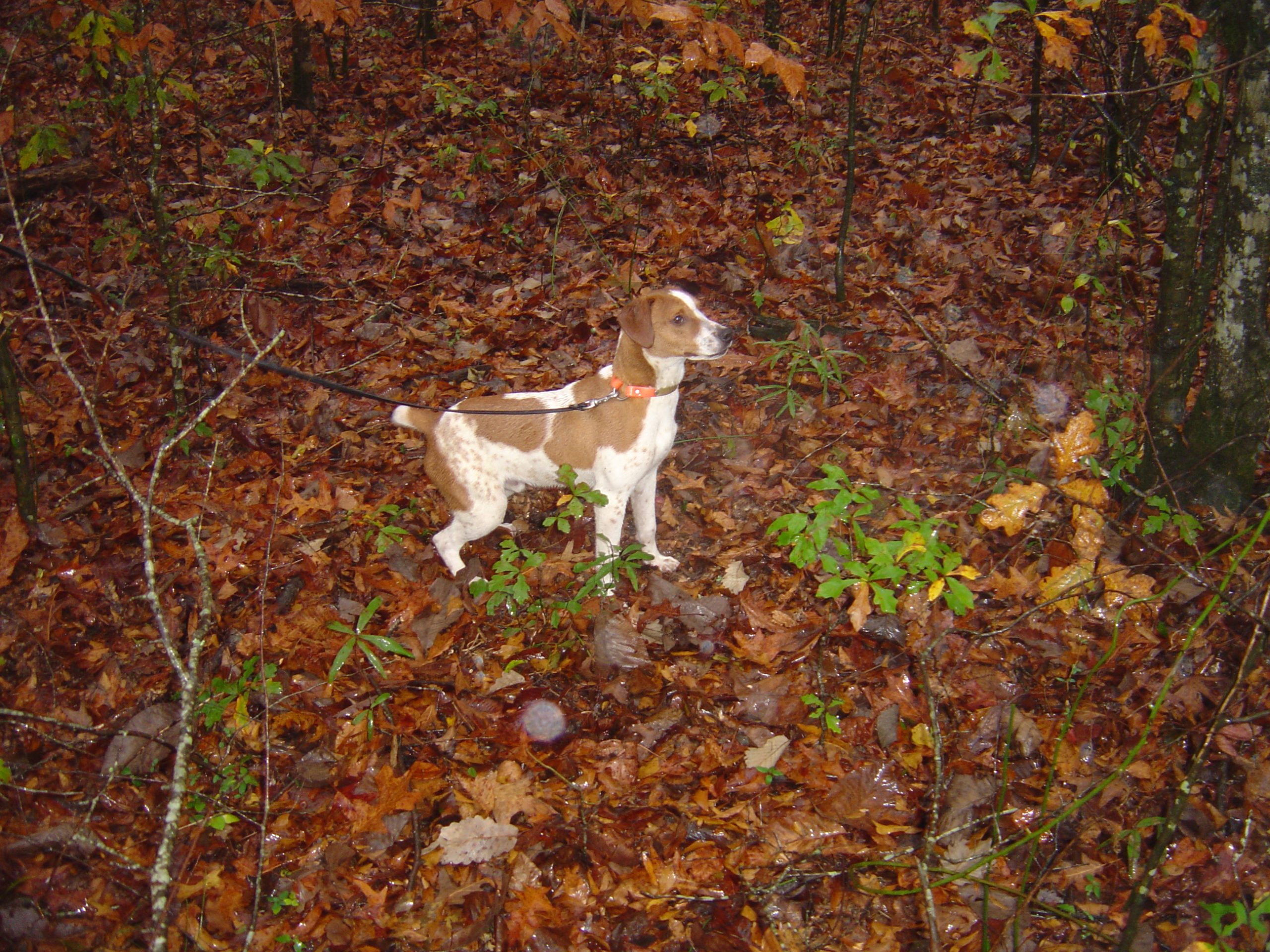
The percentages are important. Too much bird dog, and the result may be a dog that loses its instinct to tree. Yet, add a little bird dog into the mix – usually no more than a quarter – and the product is a squirrel dog with a good nose and stamina to run all morning long.
“I’m one of the first one around here, not the first one to do it but one of the first ones around here, to breed “bird dog” into “squirrel dogs”. They have an exceptionally good nose and run with their head up. They cut the woods up well and do a lot of winding.”
Hounds bring their own unique traits into a mix although too much hound potentially creates its own set of problems. One is too much nose that attracts a dog to any hint of squirrel scent, even if it’s hours old.
Does the approach always work?
“I’ve been squirrel hunting with dogs and breeding dogs for almost 40 years now,” Conwill said. “I seem to have a reasonably good sense of what will work and what won’t although I’ve had some that I thought were going to be good that turned out terrible. Of course, I’ve had some that I had a lot of questions about that turned out really good.”
One consideration that Conwill dismissed long ago was fixating on lineage and titles. Although he can cite the ancestors of most of the dogs that he’s bred through the years, Conwill is more concerned with developing quality hunters than with preserving a line of purebred dogs.
“I started breeding more for characteristics that I like more than for bloodlines and titles,” he said. “I just had a lot better luck. Now we have it down.”
Hard Rockin’ Blondie
The young dog that we hunted earlier in the fall is a good example of the type of dog that Conwill and his relatives produce through their Hard Rockin’ Kennel (256-577-7105).
He explained that Blondie is the product of a registered Stephens cur from Mississippi, a male dog that is jet black with a long tail. Stephens curs are often used as coonhounds, but Blondie’s father is a squirrel dog. Unlike some curs, the Stephens line normally produces smaller dogs.
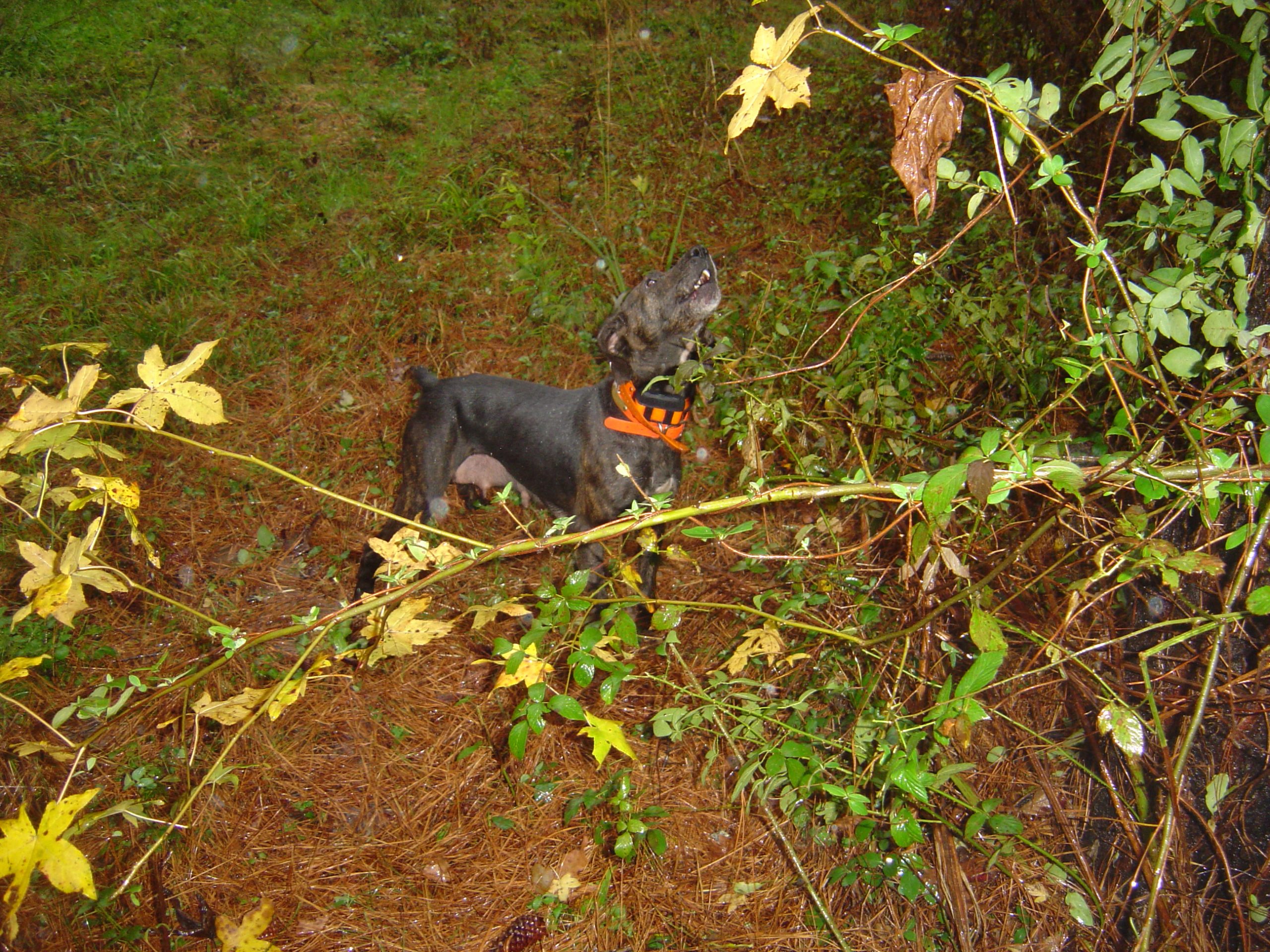
Blondie’s mother is what Conwill called “the best squirrel dog I ever owned,” half original mountain cur and half Walker coonhound. She is a bigger brindle dog, and the exception to the “too much hound” rule often employed by Conwill.
The cross means that Blondie is half Stephens cur, a quarter original mountain cur, and a quarter Walker hound although there is evidence of other influences back down the line. She turned out to be about the same size of her father, roughly 30 pounds, but is solid yellow.
“That means she’s got some Kimmer (cur) in her somewhere back down the line, probably one of her grandparents or maybe great-grandparents,” Conwill said.
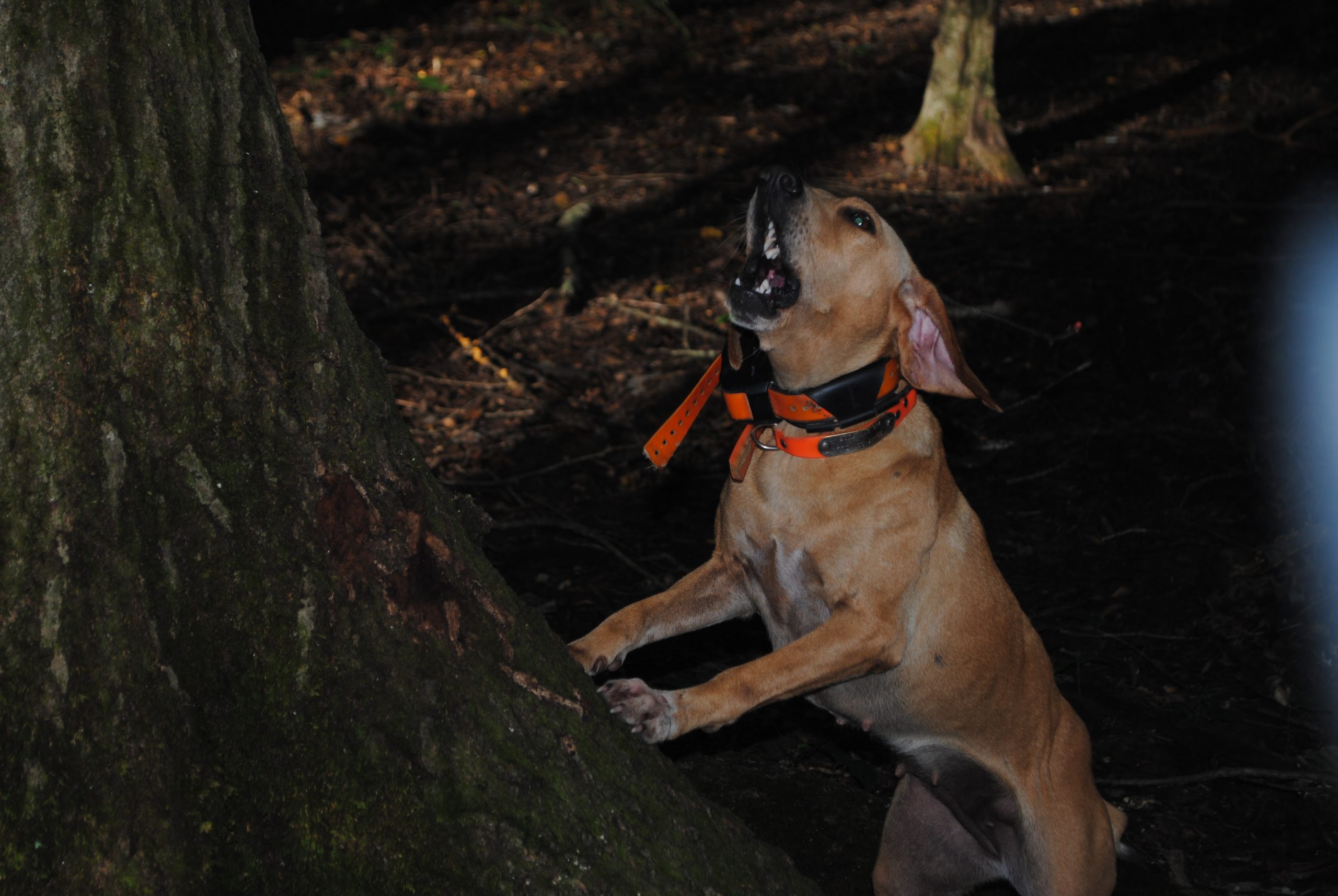
Aside from the physical traits, Blondie inherited just about all of the good characteristics of her parents, including intelligence, personality, and the ability to both wind and track squirrels.
“This little yellow dog is a pretty good hunter, exceptionally good for no more than I have hunted her,” Conwill said.
“She’s naturally intelligent and has to have very little correction. She’s always minded very well. Her momma was that way; for lack of a better expression, she always wanted to please you. This dog is the same way.”
After years of experimentation, Conwill has basically settled on a process of breeding common to the dog industry. Blondie is the product of that process, and he will soon breed her in hopes of producing similar squirrel dogs.
His plans are to breed Blondie to a half brother, called line breeding in the business. Blondie and the half brother have the same mother.
“If you have a common ancestor, it’s what is called line breeding,” Conwill said.
“The cross that we’ve always had the best luck with is the half brother to the half sister going back to the mother. You want to try to keep as many of (the mother’s) traits as you can. Every time you breed a dog to a different line, you lose half of her traits.”
Regardless of the worth or abilities of any puppies that Blondie eventually produces, Conwill will keep trying to perfect the process. He’s not expecting perfection, but good genes and years of experience help him in his attempts at building a better squirrel dog.
This article first appeared in the December 2018 print issue of Great Days Outdoors Magazine. For more great hunting and fishing content for the deep South, subscribe to Great Days Outdoors print and digital editions or click the image to download this issue.

